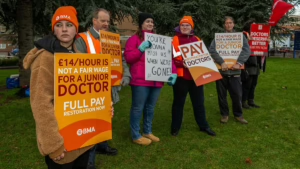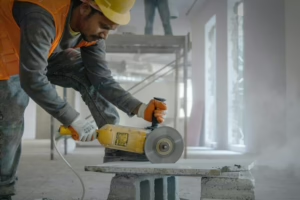You can exchange your car with finance. You must first settle any outstanding finance. This is usually done by asking your lender for a settlement amount. The difference between the value of your car and what you owe is credited towards your next car if it’s higher. If the value is lower, you will need to pay for the difference.
Some people believe that you cannot swap a vehicle until the car is paid in full. That’s false. Dealers deal with part exchanges every day. The lender owns the vehicle until the balance is paid. Check your contract. PCP and HP are different, so the terms will vary. Before deciding, ask the dealer to clearly explain your options.
Understanding Your Finance Agreement
Before part-exchanging, you must understand your finance agreement. PCP and HP have different rules and structures. PCP has lower monthly payments and a balloon at the end. You can either return the vehicle, pay the balloon or exchange it. With PCP, the car’s future worth is more important. You may feel like you have fewer options if you are on a PCP with bad credit. However, understanding the terms will help you to stay in control of your finances and avoid any unexpected costs.
HP amortizes the cost of the car over the entire term. You own the vehicle outright once you have made the final payment. You can still exchange your car early, but first you have to settle the debt. Asking your lender to provide a settlement amount is the first step. This step is often assisted by dealers. Check your contract for any fees or conditions. Understanding the differences will help you make the best decision.
The Part Exchange Process explained
Ask your lender for the settlement amount. It will show you the exact amount needed to pay off the loan. This is usually valid for 10 to 14 days. So, act fast once you get it. You can then have your car appraised by a reputable dealer or an online tool. Be sure that the value reflects the age, mileage and condition of your vehicle.
Compare the settlement amount with the current value of your vehicle. You have positive equity if the value of your car is higher. This equity can be used to pay for a deposit on a new car. Negative equity is when the value of your car is less than its current market value. The difference must be paid or included in the new financing deal. This will affect your monthly payments in the future.
After you accept the offer of part exchange, the dealer will contact your lender to settle any outstanding balance. All you have to do is sign the agreement, give the keys and drive off in your new vehicle.
Positive Equity: Maximizing your Advantage
When part-exchanging, positive equity can give you real financial leverage. The market value of your car is greater than the remaining amount on your finance contract. If your car is worth PS10,000 but your settlement is only PS7,000, then you have PS3,000 of positive equity. This amount can be used to purchase your next vehicle.
Use it as a down payment to lower the amount you borrow. You can lower your monthly payments, and you may be able to get better interest rates. You can upgrade to a higher-spec vehicle with a higher deposit. Some drivers opt to reduce the term, which will allow them to pay off the loan more quickly.
Make sure that the dealer adds the entire equity amount to your new contract. Always ask for the written breakdown. So you’ll know how to add up the numbers. You are in a good position if you have positive equity.
Negative Equity – Navigating the challenges
Negative equity is when you owe more than the value of your vehicle. If your settlement is PS 9,000, but your car’s value is PS 7,000, then you will have a PS 2,000 shortfall. Part exchanging is more difficult, but still possible.
There are a few choices. You can pay for the difference up front and cover the shortfall. You will not incur any extra interest and your new agreement will be clean. You can also roll over the negative equity to your next contract. The shortfall will be added to the new loan and the total borrowed amount will increase.
This option will increase your monthly payment and limit the vehicles you can choose from. This can lead to a deeper negative equity if the value of the car drops. Ask the dealer to clearly explain the implications. Only proceed if you feel the new contract fits within your budget.
Documentation required for part exchange
To exchange your vehicle quickly, you must have the right documentation. The V5C document is often called a logbook. It confirms that you are the registered owner and provides important information, such as your name and address and the VIN number of the vehicle. Update any incorrect details before exchanging.
Include a valid MOT if your car is older than three years. Cars with recent MOTs are often valued higher. The dealer is reassured that the vehicle meets environmental and road safety standards.
The service history record is also important. A complete or well-documented record of service shows that the vehicle has been maintained consistently and gives the dealer assurance about the condition of the car. Even partial records can be better than none.
Last, collect spare keys, the owner’s manual, and the locking wheel nut key. Missing items may lower your offer. Dealers are expecting these. Presenting the car in good order speeds up the process and shows you have taken care of it.
Alternatives to part-exchanging a financed car
If you have any remaining finance on your vehicle, a part exchange may not be the best option. You may be able to find an alternative depending on your agreement, goals and budget. Take a look at the options available to you.
- Selling privatelyYou will often get a better price if you sell to a private purchaser than if you part exchange with a dealer. You must pay off the loan before or during the transaction. Your lender can provide you with a settlement amount and you can clear the balance on your own. The buyer can also pay the lender, but private buyers expect that the financing is cleared up front. This method takes more effort, but you can end up with more money.
- Early Settlement of Finance
You must pay off the entire amount of your contract before you can move forward. After the finance has been settled, the car is yours and you can sell it or exchange it without any restrictions. Request a settlement amount that includes the balance remaining and any early settlement charges. You have more flexibility, but you’ll need to pay upfront for the loan. - Voluntary Termination
You may be eligible for a voluntary termination if you have repaid 50% or more of the total amount in a Hire Purchase agreement (HP) and Personal Contract Purchase agreement (PCP). You can return the vehicle in good condition within agreed mileage limits. This is a legal right, under the Consumer Credit Act. However, if you use it too frequently, this could impact your future ability to obtain finance.
The first time HR news published the article Can you part exchange a car on finance?.


